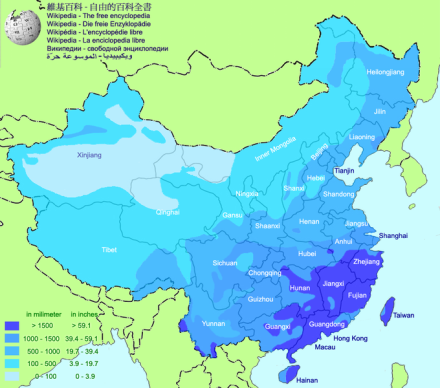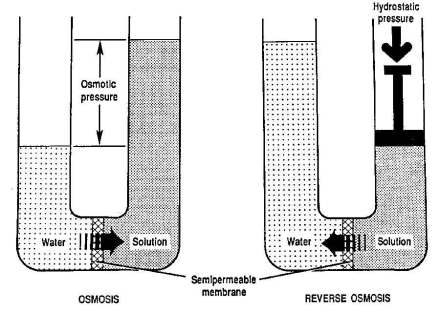More and more, organizations are not only talking about the water-energy nexus — but the food-water-energy nexus, or the energy-water-food-climate nexus.
Academia and Research Institutions
Last year, on Earth Day, Stanford University started organizing an annual gathering that brought together many of its schools and institutes into conversation with each other. The “Connecting the Dots: The Food, Energy, Water, and Climate Nexus” symposium brought together the TomKat Center for Sustainable Energy, the Center on Food Security and the Environment, the Woods Institute for the Environment, and Stanford’s School of Earth Sciences.
The 2011 “Connecting the Dots” Annual Symposium. (Video courtesy of Stanford University)
In the above video, the opening speaker explains why the interdisciplinary gathering is important: “The great global challenges of the century of providing clean and affordable enrgy, adequate food and improved nutrition, clean water for people and ecosystems, a protected and sustained environment and planetary life support system–all these are tightly linked to each other.” The speakers presented on a range of topics, including global food challenge for the 21st century, competition for biomass as both a source for food and energy, and how aquaculture is linked to food security.
As a graduate student who is familiar with the bureaucracies of higher education, I realize that it is no small feat to bring so many schools and institutions together in one room and have them talk about the intersection of all these issues. The fact that these gatherings are happening signals to me that talking about these issues in an interconnected way is important because the challenges we face are becoming more and more urgent.
International and Regional Organizations
But it’s not only academics and researchers who are recognizing this. Just this past week, the United Nations Climate Change Conference, COP18, was held in Doha, Qatar. A panel discussion called “It Never Rains in the GCC” focused on the energy-water-food-climate nexus. The panel brought together experts from international, governmental, and organizations such as World Economic Forum, Global Water Partnership, Environment Agency Abu Dhabi, New York University, and UN Food and Agriculture Organization.
The GCC is the Gulf Cooperation Council, a loose political and economic alliance of six Gulf countries: Saudia Arabia, Kuwait, the United Arab Emirates (UAE), Oman, Qatar, and Bahrain. The title of the panel refers to the fact that the Gulf region is very arid and suffers from extreme water scarcity. The area is heavily dependent on food imports and its freshwater supplies come largely from desalination processes. In response, GCC governments have announced over $100 billion of investments in desalination and water recycling by 2016, as well as over $200 billion of investments in energy efficiency and renewable and nuclear energy, following the development model launched the UAE.

Gulf countries are undertaking massive renewable energy projects to address water-energy-climate nexus issues. UAE has emerged as a pioneer in this sector with solar initiatives. (Image courtesy of AFP)
Despite the region’s well-known oil resources, the UAE wants to substantially incorporate renewable sources to the traditional mix of fossil fuels for energy generation. The country set the region’s first renewable energy targets, which mandate over 2500 megawatts of solar, waste-to-energy, and wind projects in coming years. To address issues related to the energy-water-food-climate nexus, it has also implemented things like sustainability building and public lighting codes, air-conditioning performance, agricultural and landscaping efficiency standards to reduce energy and water consumption.
Non-Profits
In the non-profit arena, environmentally-oriented philanthropic organizations such as Grace Communications Foundations are helping consumers recognize this at the individual level. Their food-water-energy nexus home page uses a venn diagram (remember these from elementary school?) to visually highlight the intersection of these issues. They explain that “because actions related to one system can impact one or both of the other systems, it is necessary to take a nexus approach.”
 Grace Foundations focuses on education and provides suggestions on how people, at the individual level, can reduce their impacts on the nexus. Some of these suggestions include things like installing solar photovoltaic panels in the home, buying energy-efficient appliances, using mass transit or biking, saving water (and thus energy) by taking shorter showers, eating less meat (livestock requires a lot of water), etc.
Grace Foundations focuses on education and provides suggestions on how people, at the individual level, can reduce their impacts on the nexus. Some of these suggestions include things like installing solar photovoltaic panels in the home, buying energy-efficient appliances, using mass transit or biking, saving water (and thus energy) by taking shorter showers, eating less meat (livestock requires a lot of water), etc.
So what?
It is important to recognize that these organizations aren’t approaching the food-water-energy nexus or the water-energy-food-climate nexus (pick whichever word you’d like to come first) in the same way.
Scholars and researchers at Stanford are looking at how issues in one of these areas affect those in another and at patterns of connections at different levels, for example, how climate change will disproportionately affect vulnerable populations in developing countries. GCC governments’ responses to the nexus is mitigation- and management-oriented, with a heavy development and investment component to it. Grace Foundations provides information and educational tools to make the public more aware, and aims at helping individuals, as consumers, make small changes to decrease their impact on nexus issues.
The “a-b-c” nexus terms are becoming buzzwords. First it was “a-b” — water-energy, energy-food. Now it’s “c-a-b” — food-water-energy. And even “a-b-c-d” — water-energy-food-climate. Which word or permutation of words will get tacked on next?
Despite the fact that the “nexus” terms may be getting a bit overused, it is important to not throw the baby out with the bathwater. Meaning that it’s very significant that people from different societal sectors — academia, government, civil society — are all recognizing that these environmental issues of water, energy, food, and climate are tightly interlinked. Our environment is a delicate ecosystem of checks and balances and what happens in one of these areas have significant impacts on what happens in the others.















